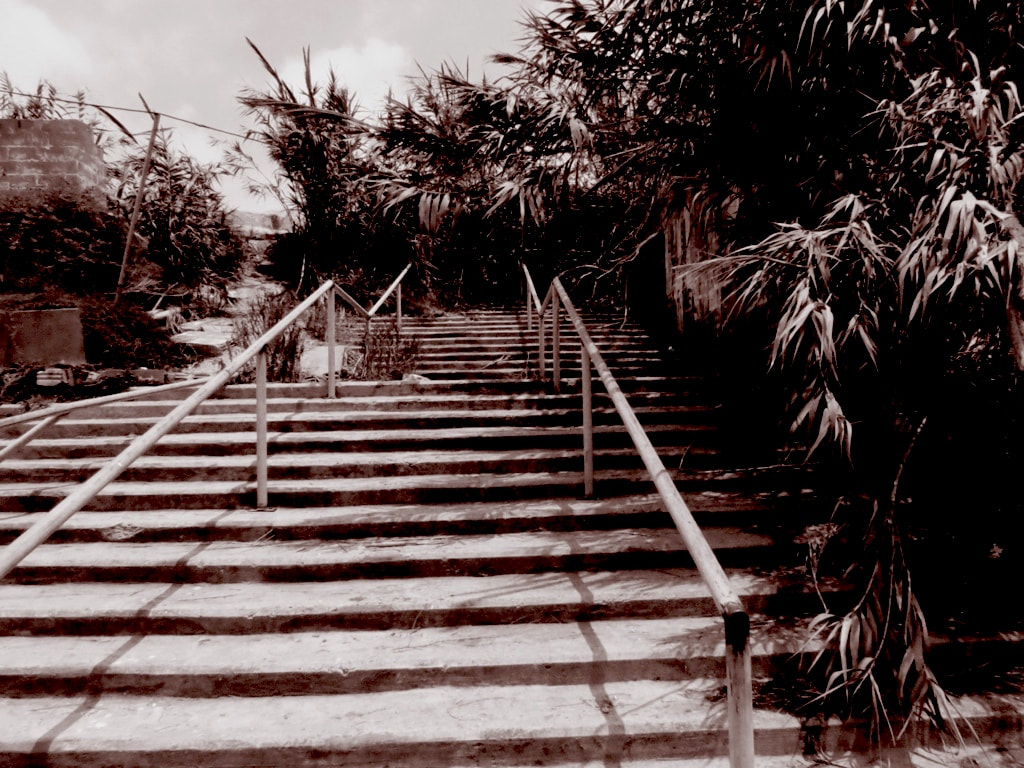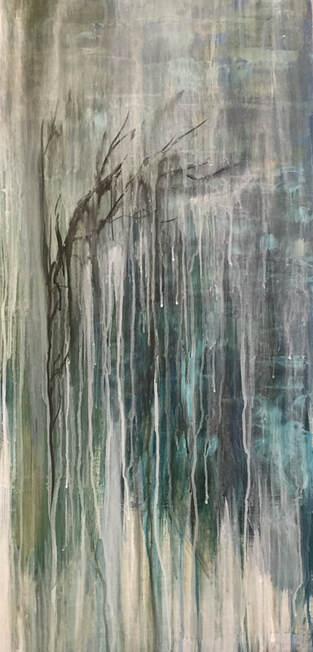|
Transforming the Found
Art allows us to transcend boundaries, challenge conventions, and breathe life into the mundane. One way that artists can achieve this is by using found materials; discarded, overlooked objects which carry a history, a texture, and a unique aesthetic that, when repurposed, can give birth to new forms of expression. Here we explore the rich, inventive journey of using found materials in art, highlighting both the environmental benefits and the democratization of creativity, as well as the profound messages that can emerge from this practice. I. Environmental Consciousness In an era marked by environmental concerns, the incorporation of found materials in art is a powerful testament to the importance of sustainability and conservation. By rescuing discarded objects and integrating them into their work, artists minimize waste and contribute to a more sustainable artistic practice. This process of repurposing not only reduces the demand for new resources but also raises awareness about the environmental impact of consumer culture. The resultant artworks serve as tangible reminders of our collective responsibility to safeguard the planet. II. Democratization of Creativity Found materials possess an inherent accessibility that transcends economic, social, and geographic barriers. Unlike traditional art supplies, which are often prohibitively expensive, found materials are readily available to anyone with a discerning eye and an imaginative spirit. This democratization of creativity empowers a broader spectrum of artists, allowing them to channel their ideas into tangible forms without the constraints of financial limitations. By utilizing found materials, artists open the door for diverse voices to contribute to the artistic discourse. III. Resonance of Narrative Every found material carries a narrative of its own. Whether it is a piece of weathered driftwood that has been washed ashore, a fragment of rusty metal salvaged from a forgotten factory, or a swatch of vintage fabric unearthed from a dusty attic, these objects possess a history that becomes woven into the fabric of the artwork. Through the juxtaposition and integration of these materials, artists can evoke powerful emotions and provoke contemplation. The resulting pieces resonate with viewers on a visceral level, inviting them to reflect on the stories and experiences that permeate the world around them. IV. Liberation of Imagination Working with found materials compels artists to perceive their surroundings in a new light, challenging them to see potential in the overlooked and discarded. This process of reimagining transforms the way artists interact with their environment, fostering a heightened sense of curiosity and resourcefulness. In seeking out and repurposing found materials, artists break free from the confines of conventional artistic mediums, opening up a world of limitless possibilities and unexplored artistic frontiers. Using found materials in art is a testament to the transformative power of human creativity. It is a practice that not only champions sustainability and environmental consciousness but also democratizes the artistic process and amplifies the resonance of narrative. By liberating imagination and redefining the boundaries of artistic expression, artists who work with found materials inspire us all to see the potential for beauty and meaning in the world around us. Embracing this practice is an invitation to embark on a journey of discovery, where the ordinary becomes extraordinary, and the discarded find new purpose and value.
0 Comments
In a world that often glorifies conformity, being a misfit, not quite fitting in with the crowd, can be challenging and isolating. Whether it's within the family, among friends, or even in our own lives, the feeling of not quite belonging can lead to feelings of inadequacy and loneliness. However, there is a silver lining to being a misfit, as it can be embraced as a profoundly positive and liberating thing. Misfits often find themselves at odds with the norms and expectations of those around them, especially their family. Parents and siblings may have a set vision of what success, happiness, or fulfillment should look like, and when one doesn't align with those expectations, it can create friction and misunderstanding. Yet, it's essential to recognize that misfits challenge the status quo within the family unit, prompting important conversations and forcing family members to expand their horizons. In doing so, they contribute to the growth and evolution of their families, pushing them to embrace diversity and individuality. Of course, this is often not the reality, as many families dislike challenges, so for some misfits family life is simply an uncomfortable feeling of forced conformity. Similarly, misfits may struggle to fit in with their peers. They might have different interests, beliefs, or values that set them apart. The pressure to conform to the norms of their social circles can be overwhelming, but in resisting that pressure, misfits can become catalysts for change. They remind their friends that it's okay to be true to oneself, and by staying authentic, they often attract like-minded individuals who appreciate and respect their uniqueness. In this way, misfits forge deeper and more meaningful connections with people who truly understand and accept them. The struggle to fit into one's own life can be the most profound challenge of all. When we don't conform to familial or societal expectations, we may question our own worth and purpose. Yet, it's precisely in this inner conflict that the seeds of self-discovery are sown. Misfits have the opportunity to explore their passions and interests without the burden of conforming to a predefined path. They can chart their course, discovering new talents, and pursuing their dreams with unwavering determination. In doing so, they often stumble upon their true calling, forging a unique and fulfilling life that defies convention. Embracing misfit status also brings an important element of resilience. Misfits learn to weather criticism, judgment, and rejection. This resilience fosters a sense of self-reliance and a profound inner strength. They learn to trust their instincts and value their own opinions above the noise of conformity. This self-assuredness can empower misfits to become leaders and change-makers in their own right, unafraid to challenge the established norms and break new ground. In a world that often prizes uniformity, being a misfit may seem like a burden, but it can be a badge of honor. Misfits have the unique ability to reshape their environments and inspire others to question the status quo. By embracing their differences and staying true to themselves, they create a ripple effect of change and acceptance that can benefit not only themselves but society as a whole. Being a misfit, whether within one's family, among friends, or in one's own life, can be an opportunity for growth, self-discovery, and positive transformation. Misfits have the power to challenge and reshape the world around them, making it more inclusive, diverse, and accepting. It's time to celebrate the misfits among us, for they are the ones who light the path toward a more authentic and vibrant future.  Human beings are naturally drawn to places that hold sentimental value or evoke cherished memories. But sometimes, in the most unexpected of moments and the most surprising of places, we find ourselves feeling a profound connection with somewhere we have never been to before, nor have any history with. It's a mysterious and enchanting phenomenon that speaks to the deep and complex relationship between humans and the world around us. This inexplicable connection to unfamiliar places often transcends mere physical presence. It's a feeling that stirs our souls and leaves an indelible mark on our hearts. There are several reasons that may contribute to this strange, almost mystical, connection. Firstly, the power of nature. When we find ourselves in the midst of breathtaking natural landscapes, something primal within us awakens. Whether it's standing atop a rugged mountain peak, feeling the spray of a majestic waterfall, or walking through an ancient forest, the sheer grandeur of nature can create an immediate bond. Even in the absence of prior experience, our senses are overwhelmed, and we become part of the environment, experiencing a deep sense of unity with it. Of course, sometimes the place is not natural. It is a world that has long been built upon, paved over. The unique and profound magic of stepping foot into a city, never visited yet there is an instant and inexplicable connection. It's as though the streets whisper secrets of lives lived and dreams pursued, and the city itself becomes a canvas upon which your own story is destined to unfold. Unfamiliar sights and sounds become familiar melodies, and the bustling energy of the streets feels like a long-lost rhythm you've finally found. It's in the architecture, the food, the conversations with strangers, and the way the city's pulse syncs with the beat of your heart. In that moment, you realize that sometimes, places have a way of claiming a piece of your soul, forging a bond that transcends time and distance, and making you yearn for the day when you can return and truly call it home. Secondly, culture plays a pivotal role in forging connections with the unfamiliar; the beauty of travel and its ability to expose us to diverse cultures, traditions, and lifestyles. Stepping into a foreign city or village, we may find ourselves immersed in a world unlike our own. The vibrancy of local markets, the aroma of exotic cuisines, and the melodies of unfamiliar music can resonate on a profound level. A stranger in this new world, we begin to understand, appreciate, and even cherish the unique cultural tapestry that surrounds us. Thirdly, history and architecture have a potent ability to draw us in. Whether it's the grandeur of a centuries-old cathedral or the shabby charm of a neighborhood, the built environment can evoke a sense of nostalgia. Even in places we have never been to before, we may feel as though we are stepping into a story that has been unfolding for generations. The architecture, art, and artifacts of a place can tell tales of triumph, tragedy, and resilience, sparking a deep connection with the past. Finally, there's something to be said for the element of serendipity. Often, our connection with an unfamiliar place is a result of unexpected encounters and chance discoveries. It could be a chance conversation with a local resident who shares a captivating story, stumbling upon a hidden gem, or witnessing a breathtaking sunset from an unexpected vantage point. These serendipitous moments add layers of meaning to our experience, transforming a mere visit into a lasting memory. Feeling a connection with a place that we have never been to before, nor have any history with, is a testament to the profound and mysterious nature of our human experience. It reminds us that our connection to the world is not solely based on familiarity or nostalgia. Instead, it is a testament to the beauty, diversity, and interconnectedness of our planet and its inhabitants. These moments of connection with unfamiliar places are a reminder that the world is full of wonder, waiting to be explored, cherished, and loved, regardless of our prior history with it. |
Details
Elizabeth Hefty KhouryExploring the Canvas of Imagination: A Fusion of Art and Words ArchivesCategories |

 RSS Feed
RSS Feed
